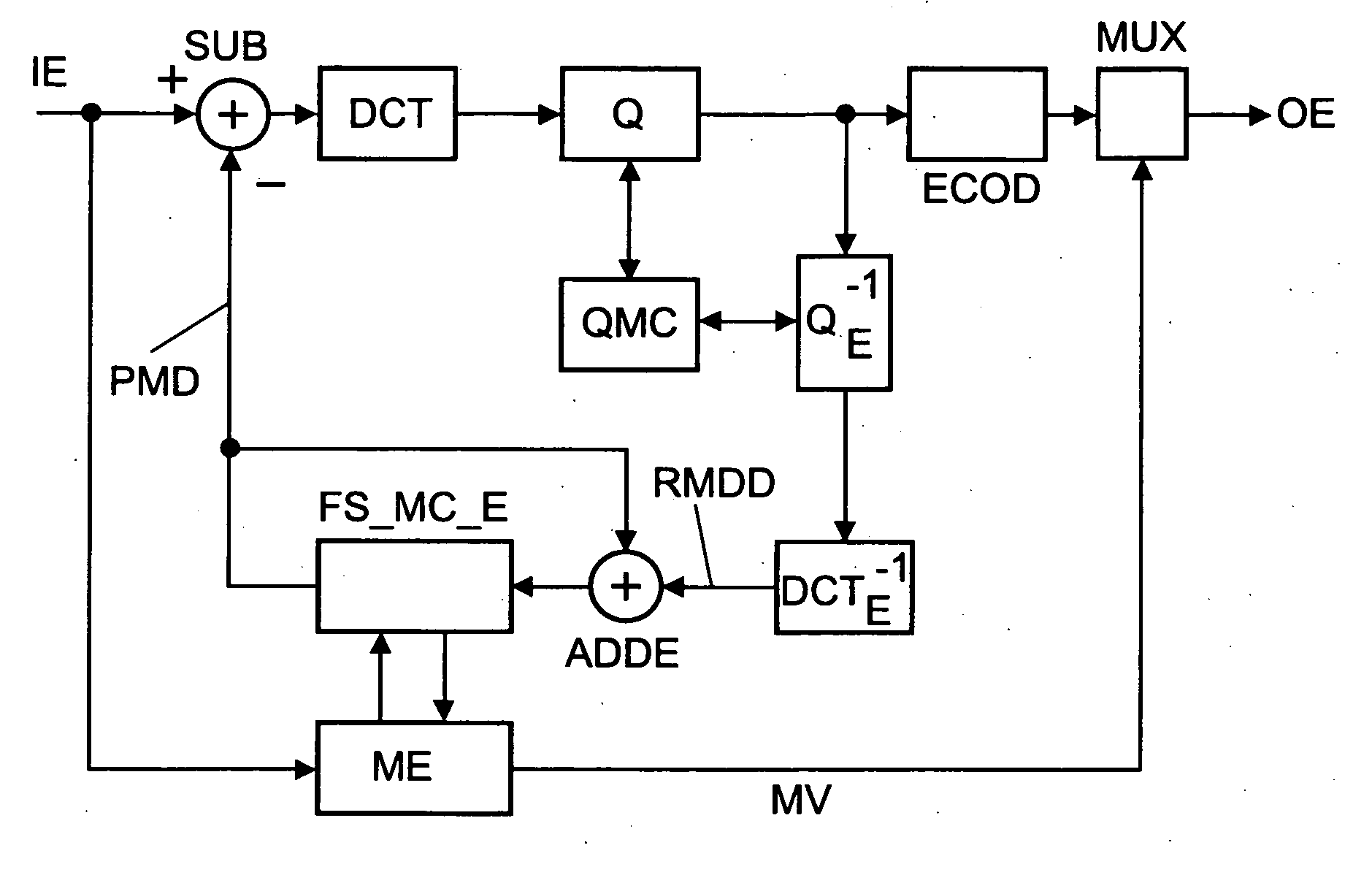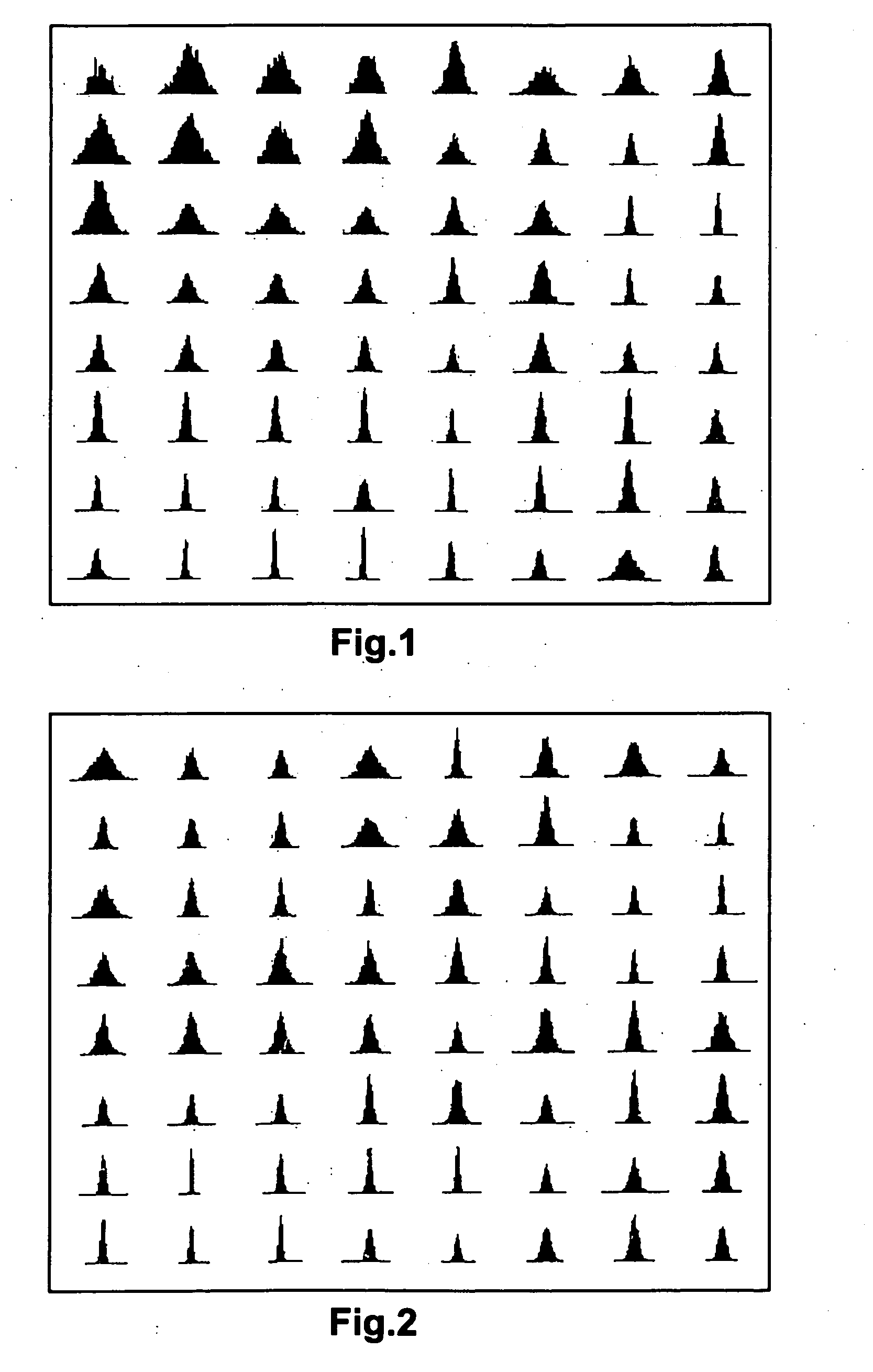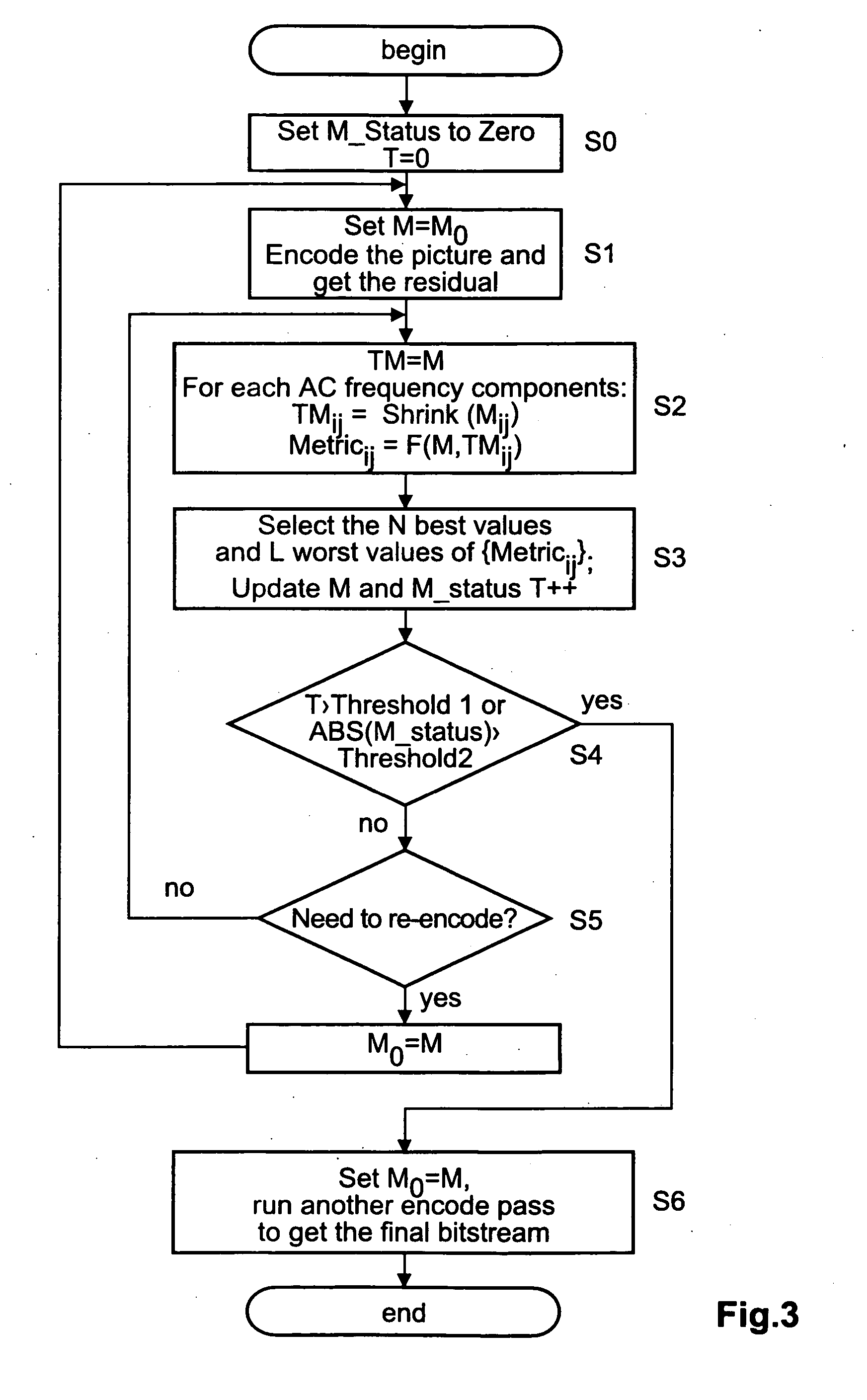Method and apparatus for generating a quantisation matrix that can be used for encoding an image or a picture sequence
a quantisation matrix and image technology, applied in signal generators with optical-mechanical scanning, color televisions with bandwidth reduction, etc., can solve problems such as distortion-invariance ruined, high-bitrate picture encoding, and poor performance on residual images, and achieve better results
- Summary
- Abstract
- Description
- Claims
- Application Information
AI Technical Summary
Benefits of technology
Problems solved by technology
Method used
Image
Examples
Embodiment Construction
[0058] Several methods for adaptive computation of the quantization matrices both for intra blocks and for inter blocks are described below. These methods can be used in all DCT-based image or video coding standards, such as JPEG, MPEG-2 and MPEG-4 H.264 FRExt, and provide flexibility for the quantization process to improve subjective or objective quality or even to adjust the bit rates.
[0059] For HD video coding, the 8*8 size transform performs better than the 4*4 size transform. Therefore, if not otherwise stated, in the following discription the 4*4 transform is disabled and the quantization matrices are all of size 8*8, for intra and for inter blocks.
[0060]FIG. 1 shows the average distribution of amplitude levels (i.e. the histograms) of the 64 DCT coefficients of all intra-frame 8*8 blocks in the HDTV sequence Kung_fu. Each small image corresponds to a DCT position. The horizontal coordinate is the quantised amplitude value (level), and the vertical coordinate is the number o...
PUM
 Login to View More
Login to View More Abstract
Description
Claims
Application Information
 Login to View More
Login to View More - R&D
- Intellectual Property
- Life Sciences
- Materials
- Tech Scout
- Unparalleled Data Quality
- Higher Quality Content
- 60% Fewer Hallucinations
Browse by: Latest US Patents, China's latest patents, Technical Efficacy Thesaurus, Application Domain, Technology Topic, Popular Technical Reports.
© 2025 PatSnap. All rights reserved.Legal|Privacy policy|Modern Slavery Act Transparency Statement|Sitemap|About US| Contact US: help@patsnap.com



